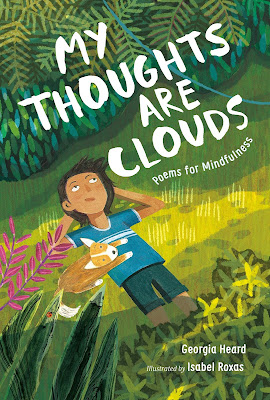The Called Themselves the KKK: The Birth of an American Terrorist Group
Bibliography:
Bartoletti, Susan Campbell. They Called Themselves the K.K.K.: The Birth of an American Terrorist Group. Boston: HMH Books, 2010. ISBN: 9780544225824Plot Summary:
“The Sergeant and Scorpion are ready, Some Shall Weep and Some Shall Pray. Meet at Skull For Feast of the Wolf and Dance of the Muffled Skeletons.” In the wake of the Civil War, newspapers across the South printed cryptic “coffin notices” such as this to strike fear into the hearts of newly freed slaves and their white allies. Their source? The secret terrorist organization named the Ku Klux Klan. Susan Campbell Bartoletti thoroughly documents the disturbing history of the Klan’s efforts to stop the progress of racial equality in the United States. Through primary sources such as letters, court transcripts, newspaper articles, slave narratives, maps, photographs, and numerous etchings and illustrations printed in Harper’s Weekly, Bartoletti reveals how the KKK used intimidation, violence, and secrecy to undercut the advancement of the freedmen and maintain white supremacy in the South.Critical Analysis:
Bartoletti strives for authenticity in her portrayal of the dark specter of the KKK on American society. In her opening “Note to the Reader,” she states that she attempted to “let the people of the past speak in their own voices,” explaining that she chose not to censor any of the more vulgar and offensive language and caricatured illustrations that were prevalent during the time. Each chapter is entitled with a quoted phrase from a primary source to illustrate a distinct concept, such as “I Was Killed at Chickamauga” to represent how the KKK imitated the ghosts of Confederate soldiers. Though the unifying narration is provided by Bartoletti, on every page, carefully curated primary sources lend credibility to the chronological sequence of the book, giving the reader a startlingly direct experience of the illustrations and texts printed in newspapers at the exact time of these historical events. The epilogue is replete with a civil rights timeline, quote attributions, as well as bibliography and source notes which Bartoletti uses to document exactly how she conducted her research and incorporated her sources to build this impressively detailed history. Bartoletti’s style is both clear and complex; she draws the reader into these harrowing accounts, allowing the voices and events to construct a vivid story of the turbulent social landscape of the Reconstruction era. The masterful design of this troubling volume will enlighten readers to the historical context and continuing struggle of racial equality against the darker forces of fear and ignorance in the United States.Awards and Review Excerpts:
YALSA Excellence in NonFiction Finalist“Copious photos, engravings, and illustrations provide a hard-hitting graphic component to this illuminating book. And while Bartoletti notes that contemporary 'hate groups wield none of the power or prestige that the Ku Klux Klan held in earlier years,' her account of attending a Klan meeting while researching the book is chilling to the core." —Publishers Weekly
“It's the numerous first-person quotes, though, that give the book its beating heart, and her searing, expertly selected stories of people on all sides of the violent conflicts will give readers a larger understanding of the conditions that incubated the Klan's terrorism; how profoundly the freed people and their sympathizers suffered; and how the legacy of that fear, racism, and brutality runs through our own time." —Booklist
Connections:
Read Bartoletti’s award-winning nonfiction:Hitler Youth. New York: Scholastic, 2005. ISBN: 1338309846
(Winner of the Newbery Honor, Sibert Honor, Orbis PIctus Honor, Parent’s Gold Choice Award, Sydney Taylor Notable, Pennsylvania Carolyn Field Award)
Black Potatoes: The Story of the Great Irish Famine, 1845-1850. Boston, HMH Books, 2001. ISBN: 0618548831
(Winner of the Sibert Award, Orbis PIctus Award, Golden Kite for Nonfiction, Pennsylvania Carolyn Field Award)
Guide Students in further discussion of issues of tolerance and discrimintation with the resources at Teaching Tolerance provided by the Southern Poverty Law Center.
www.tolerance.org




Comments
Post a Comment